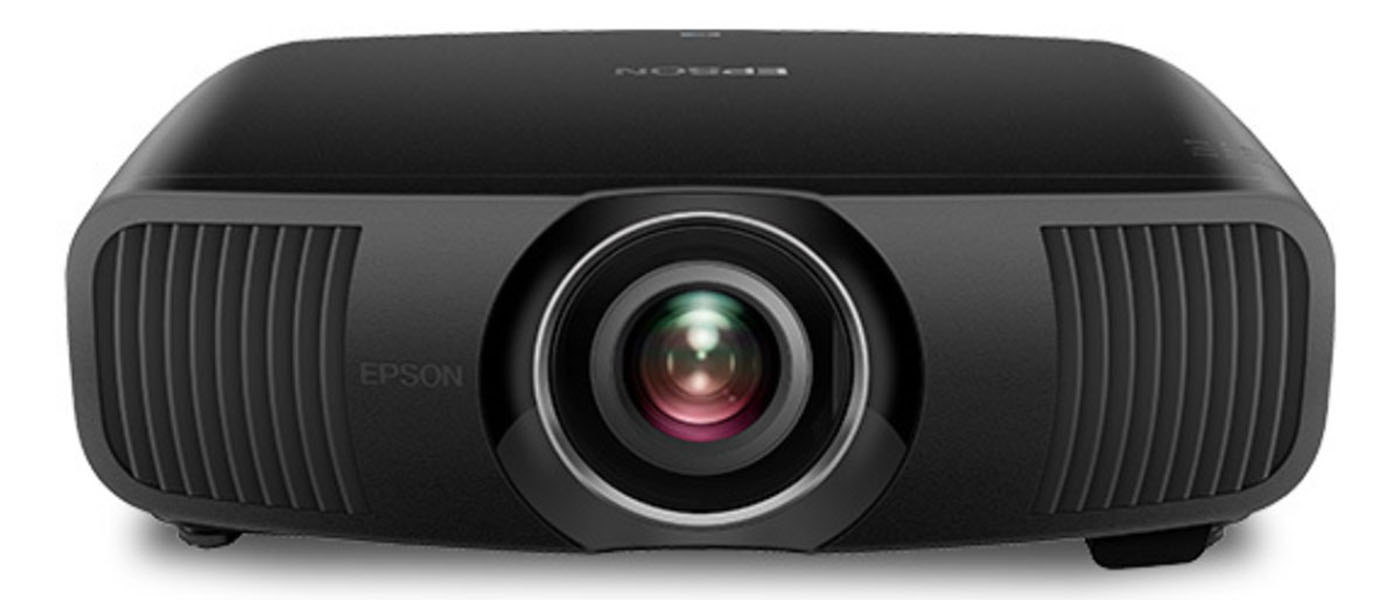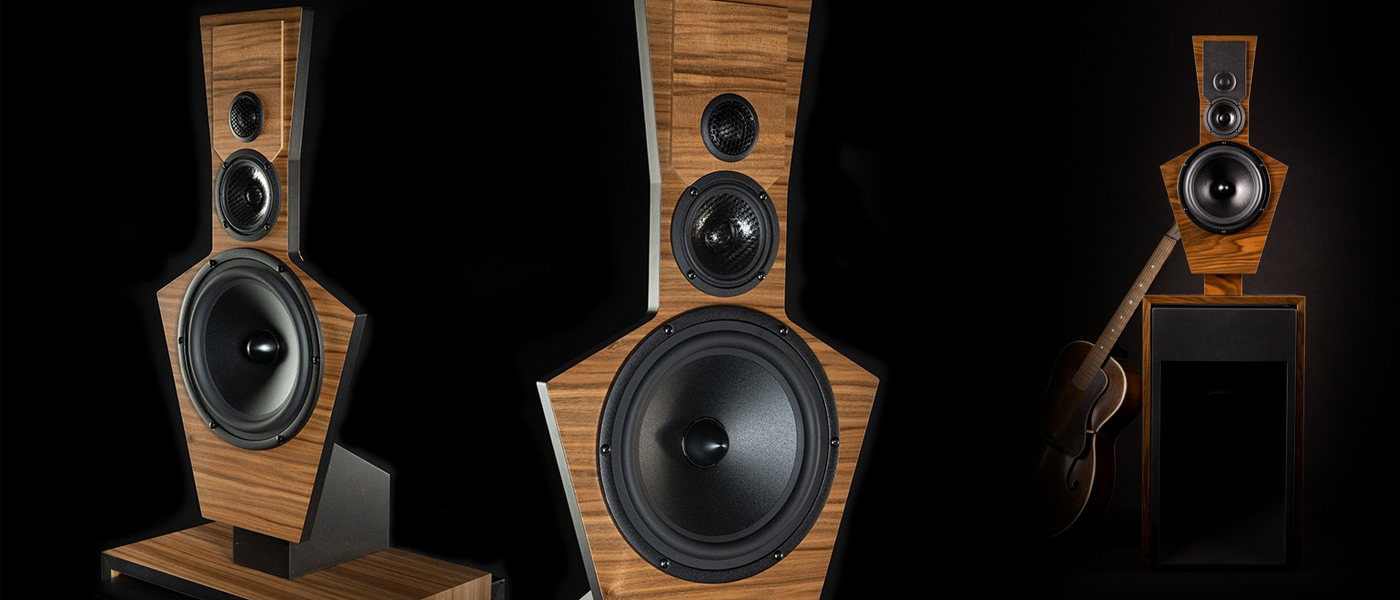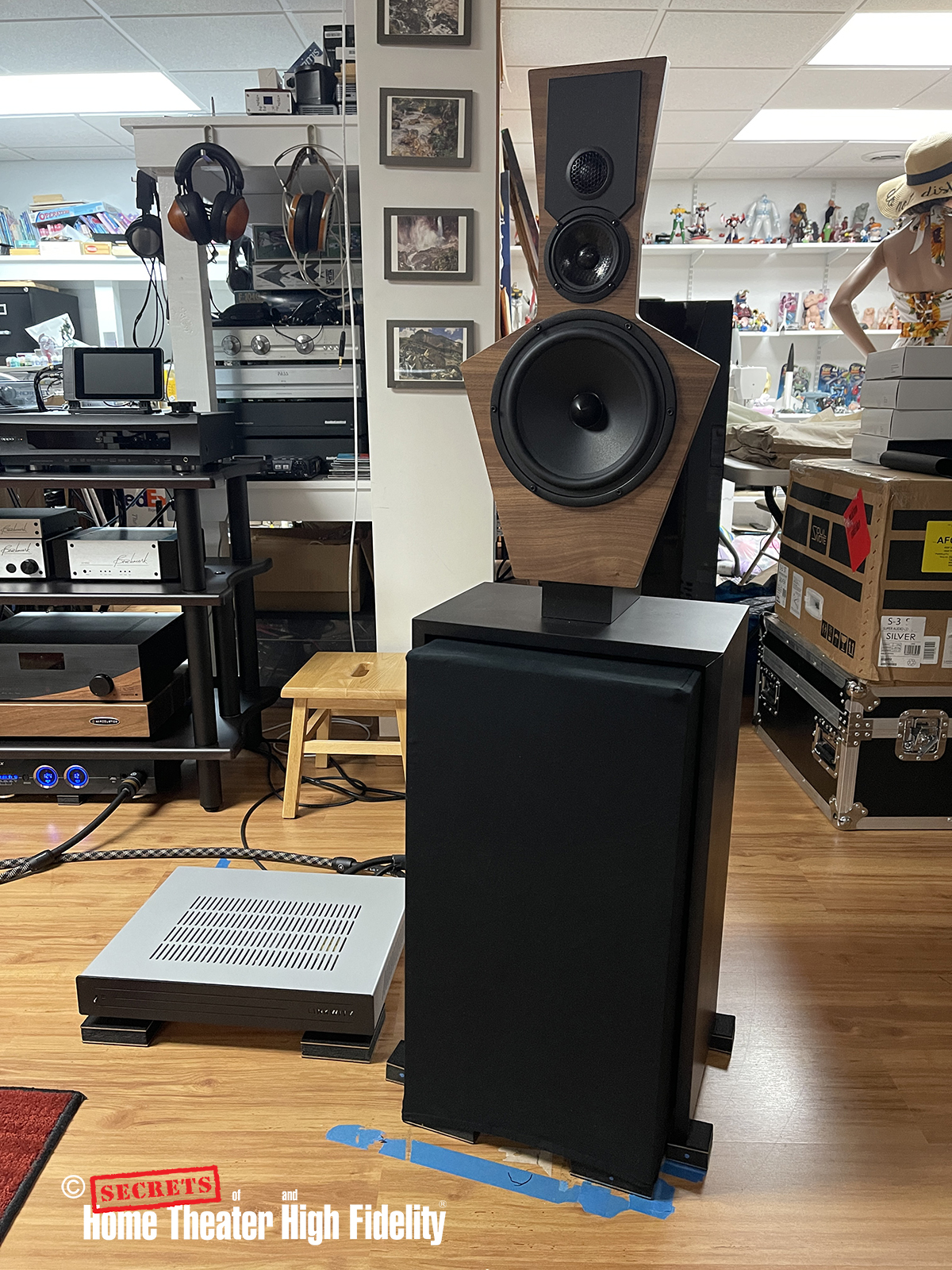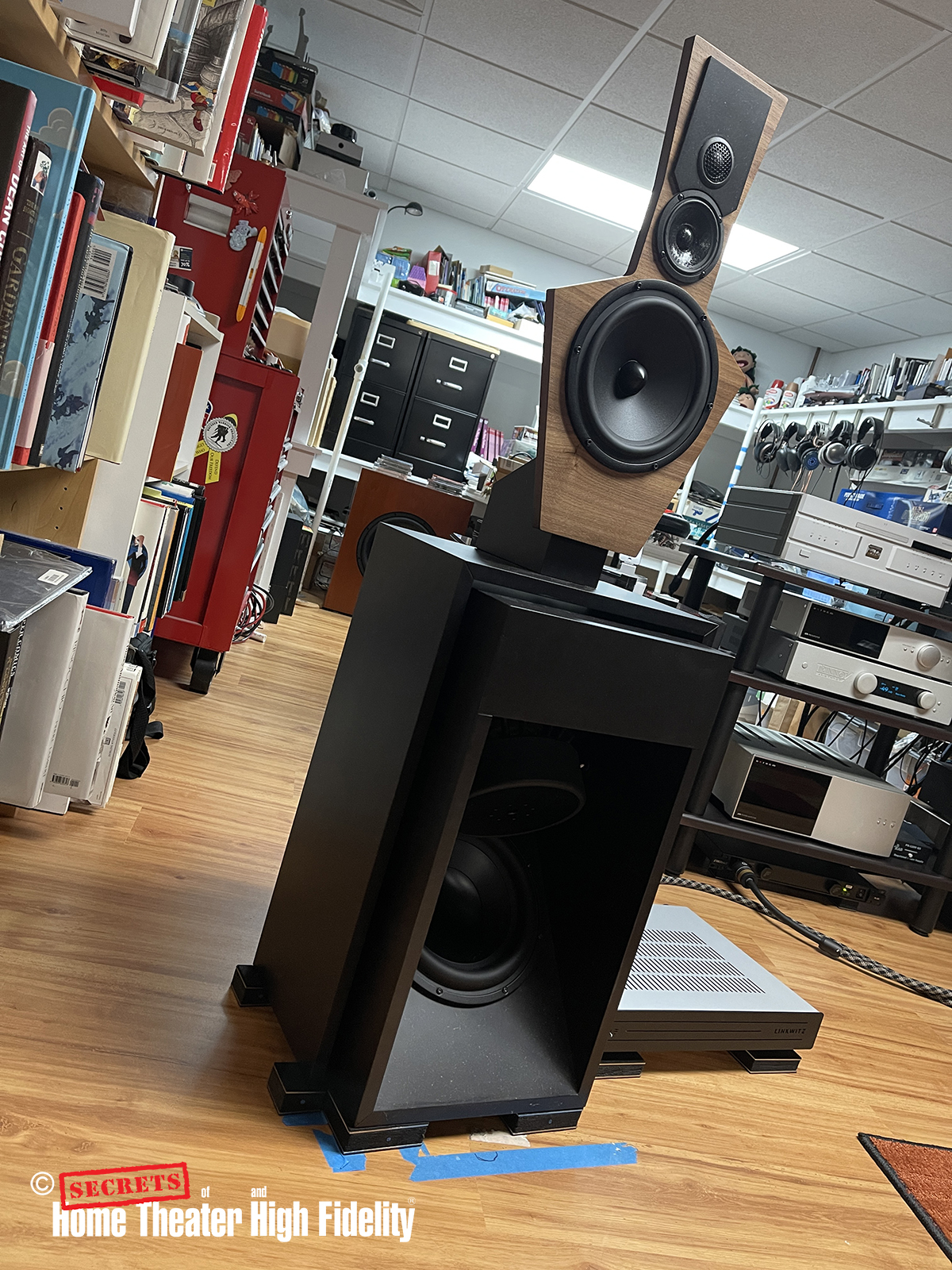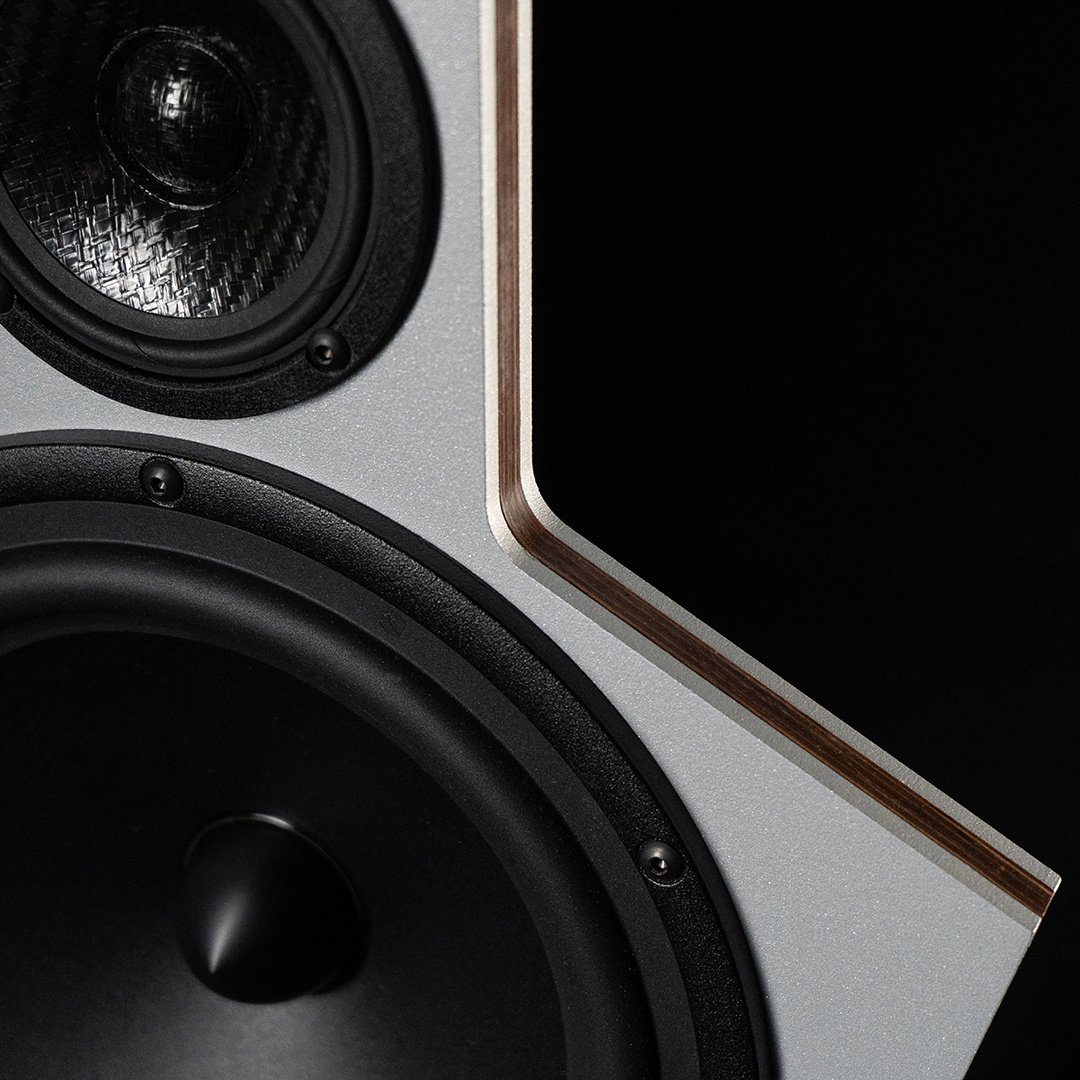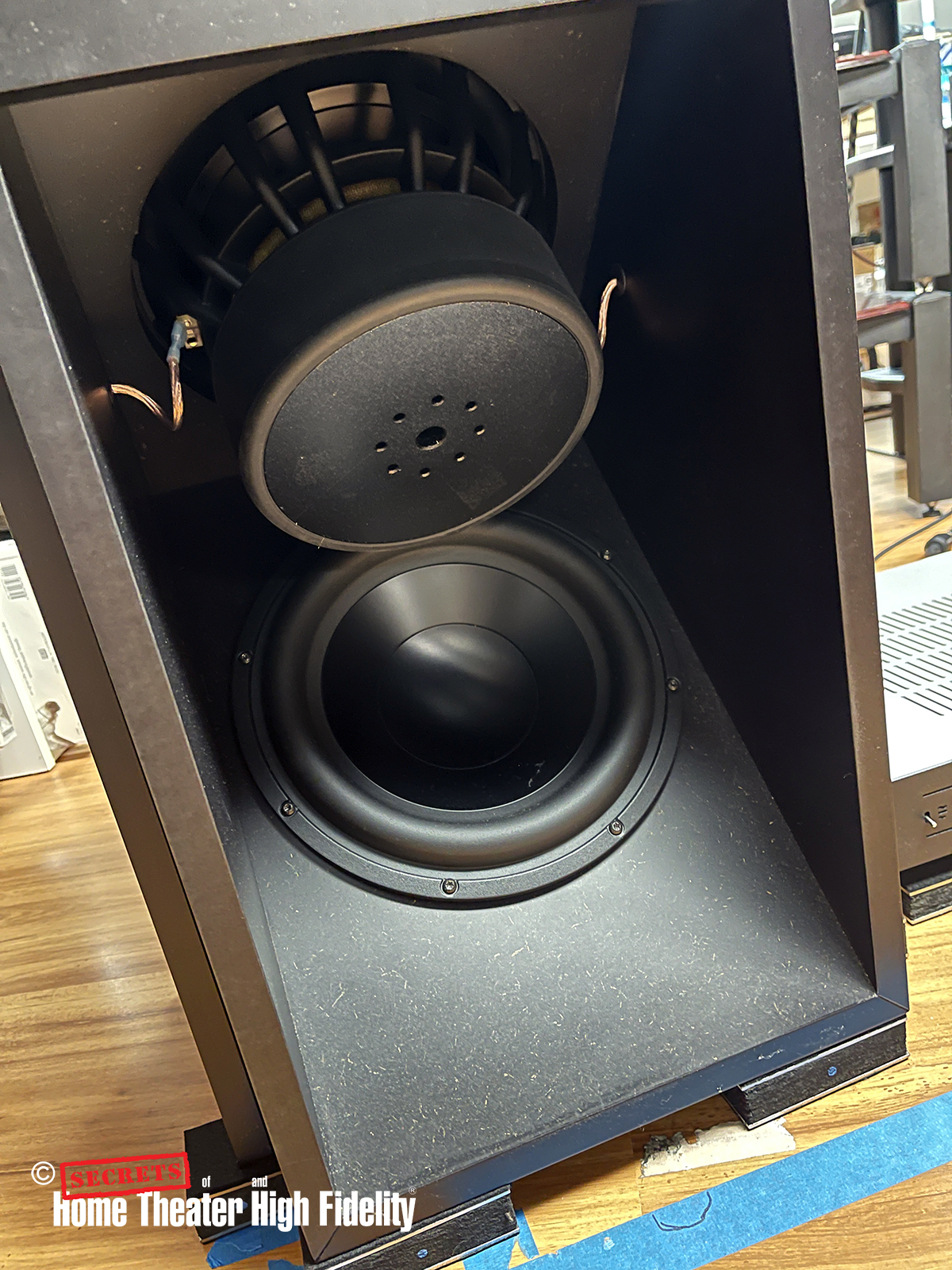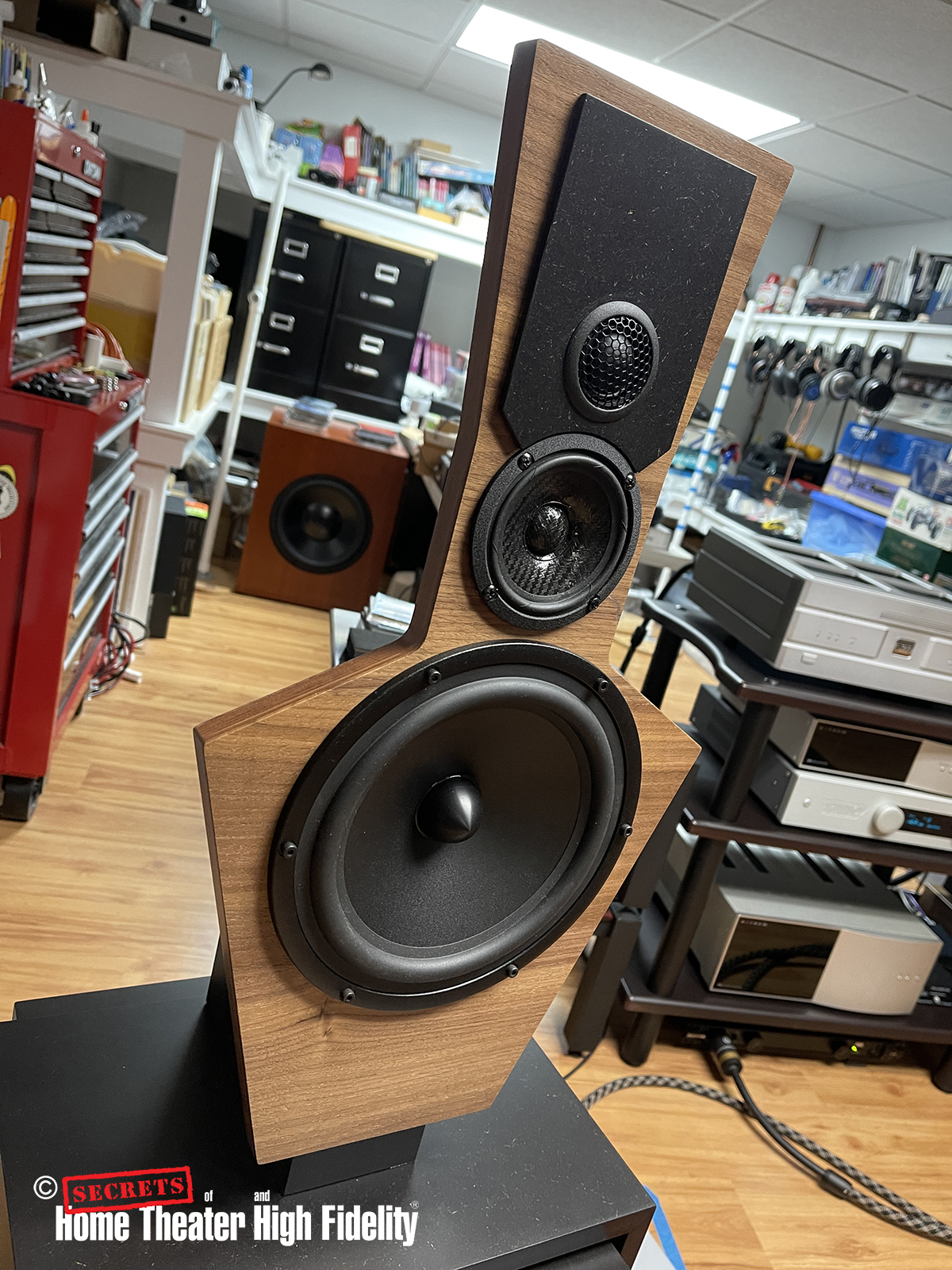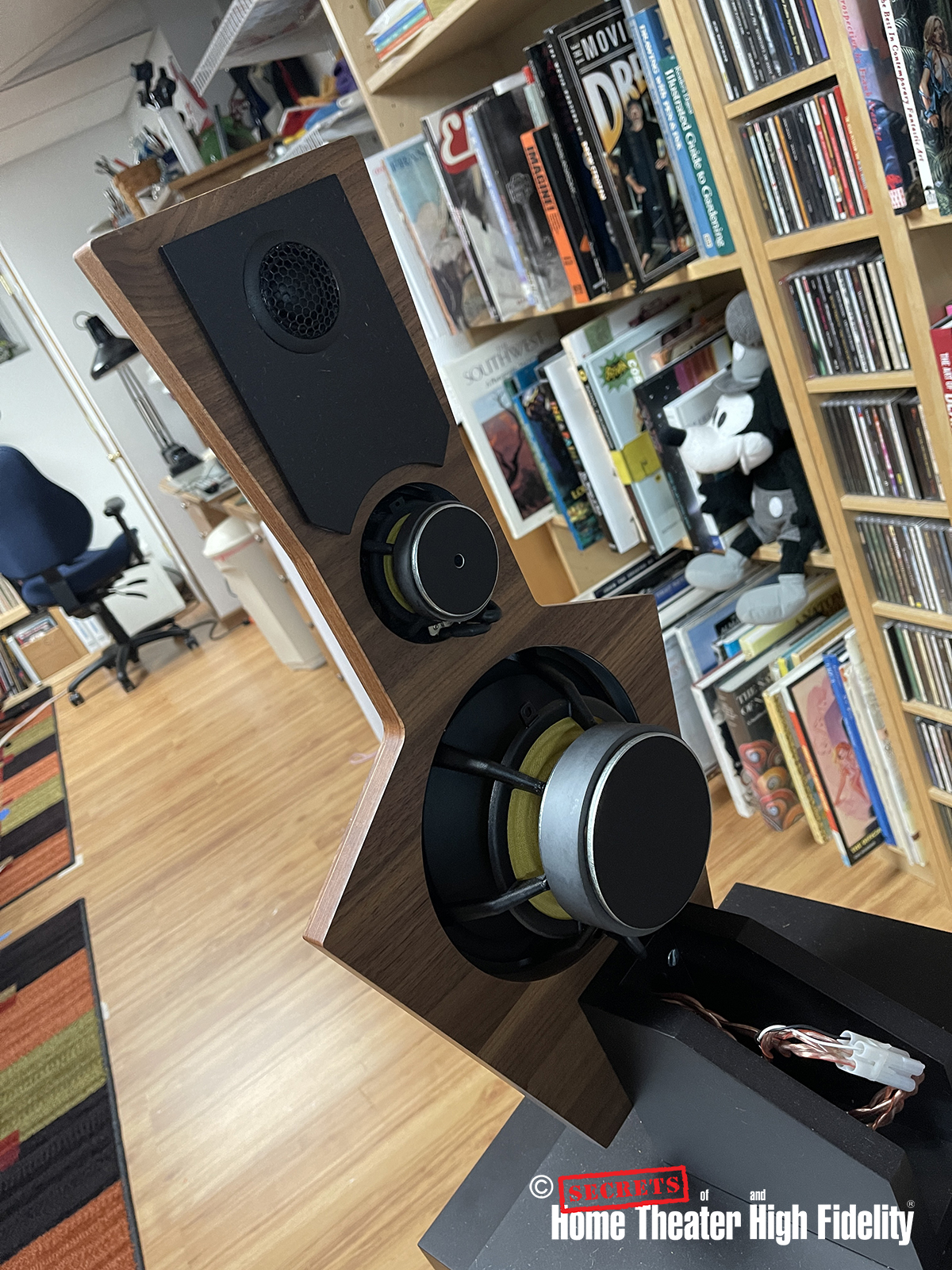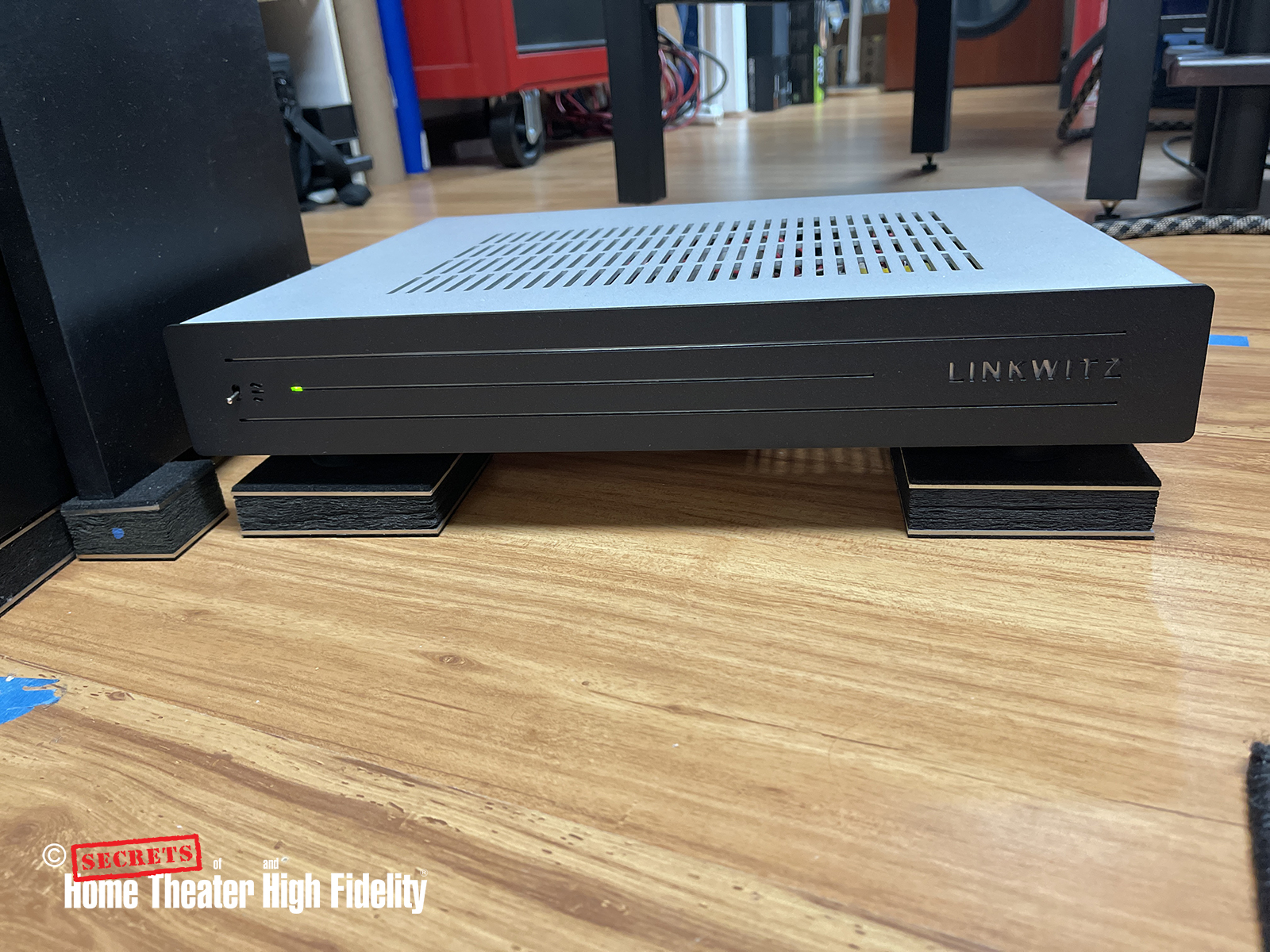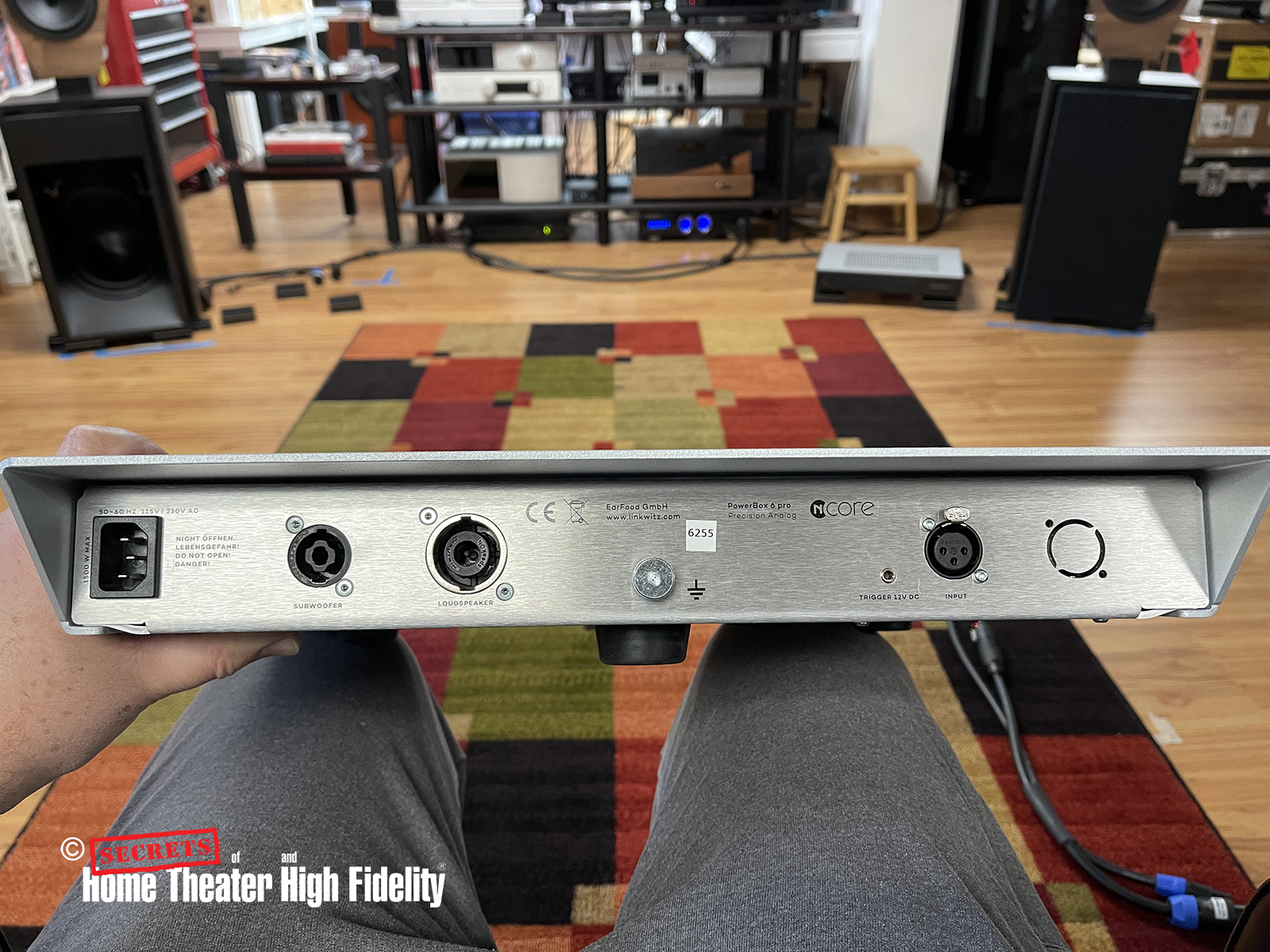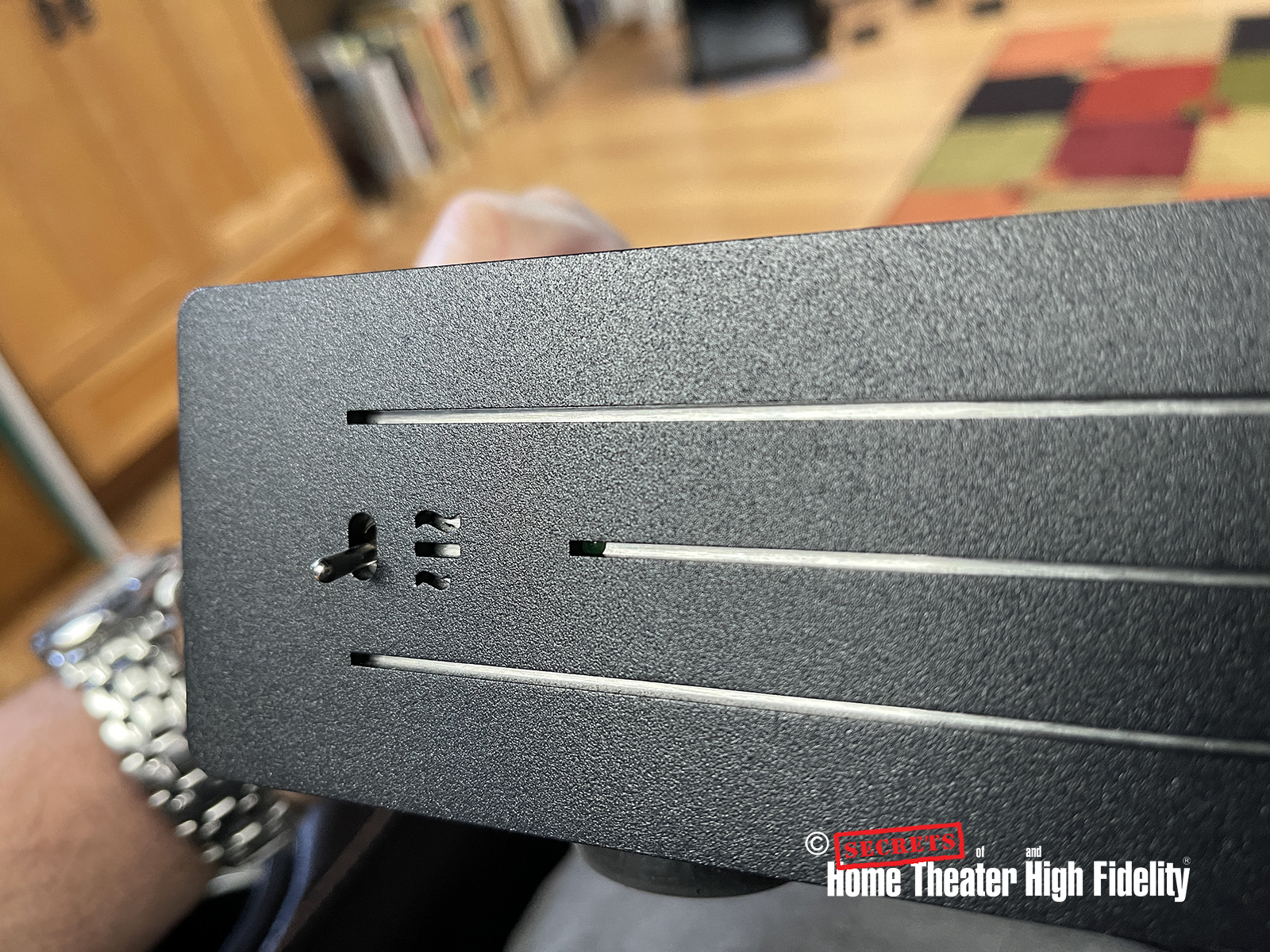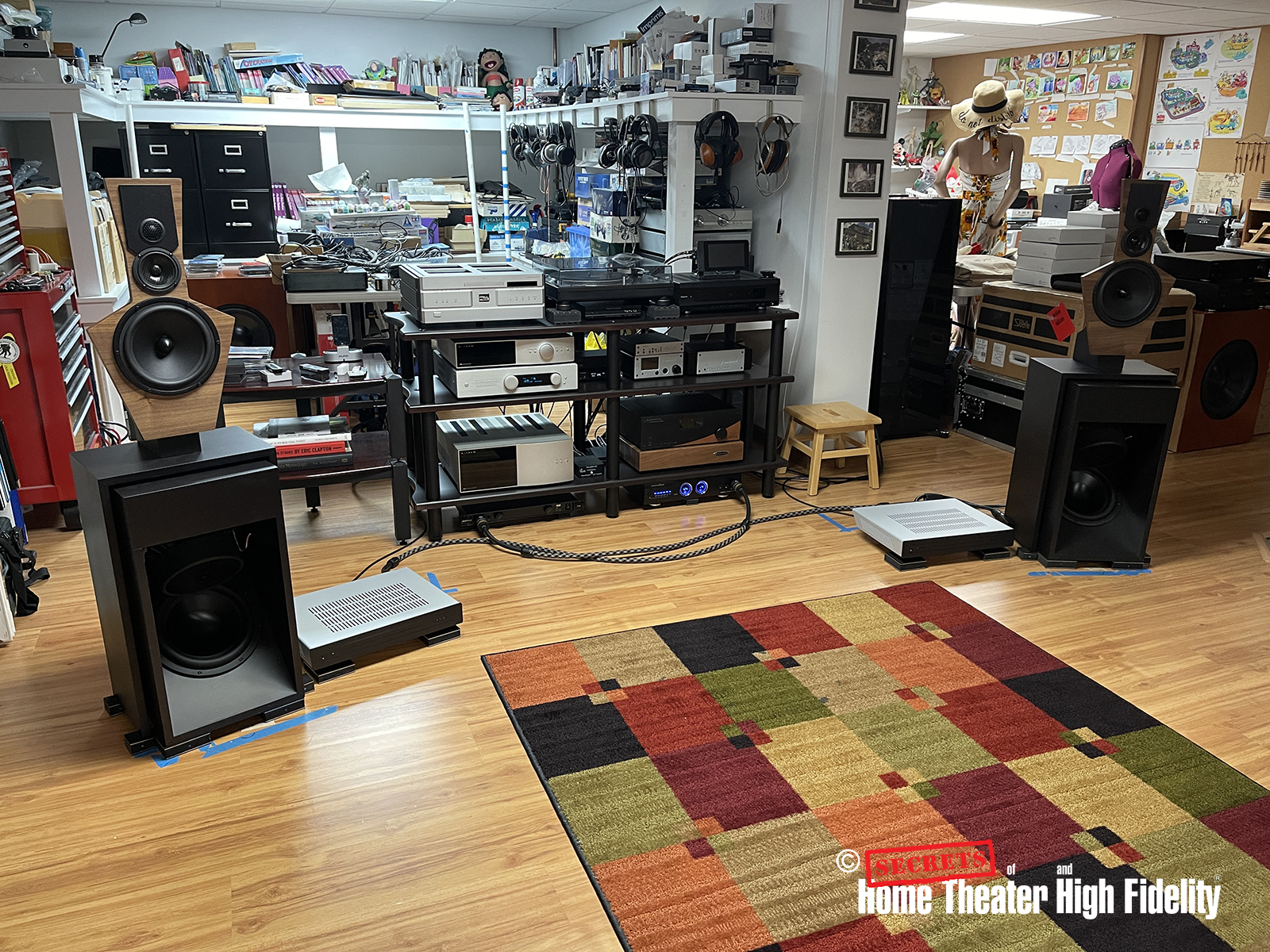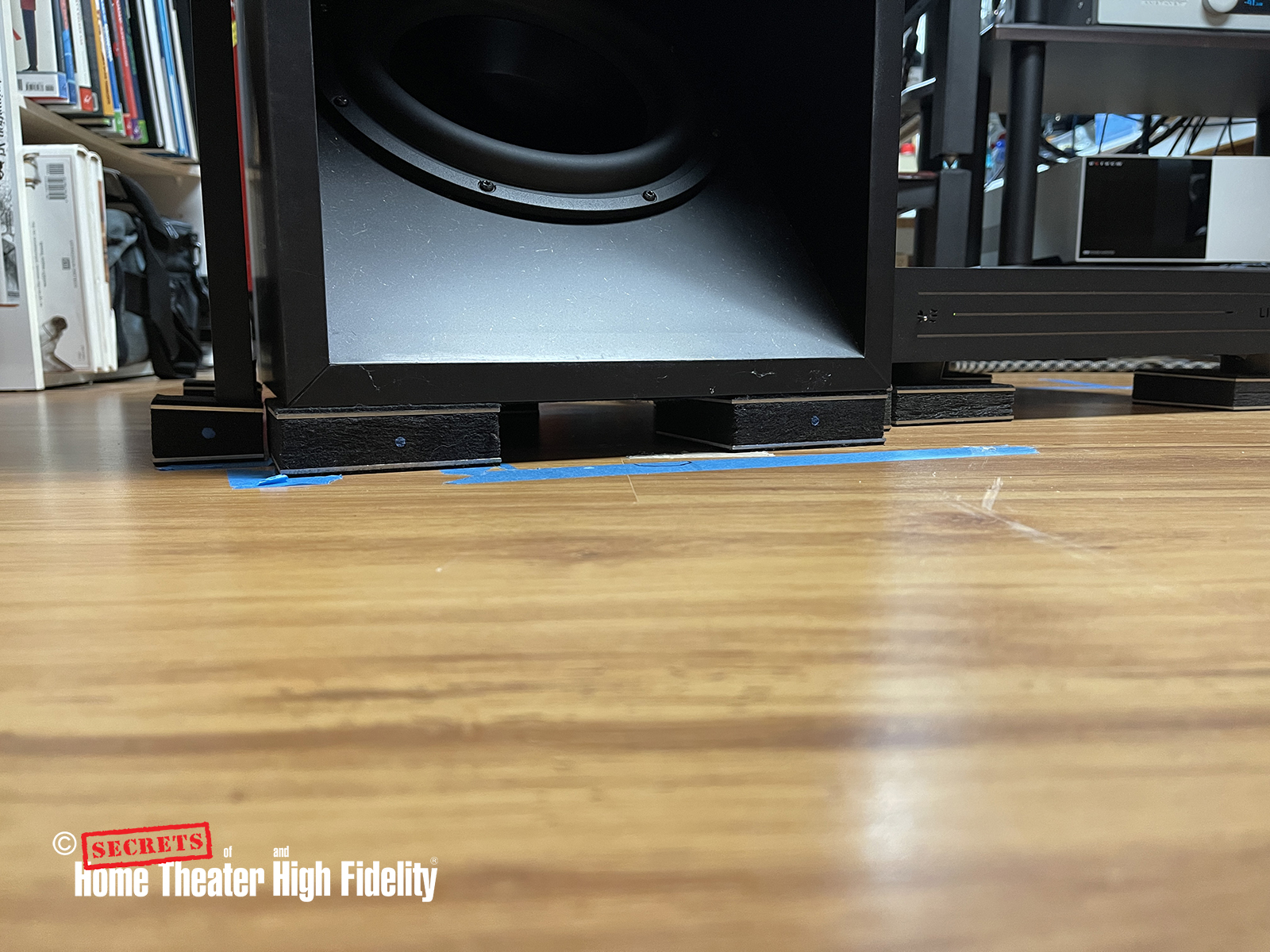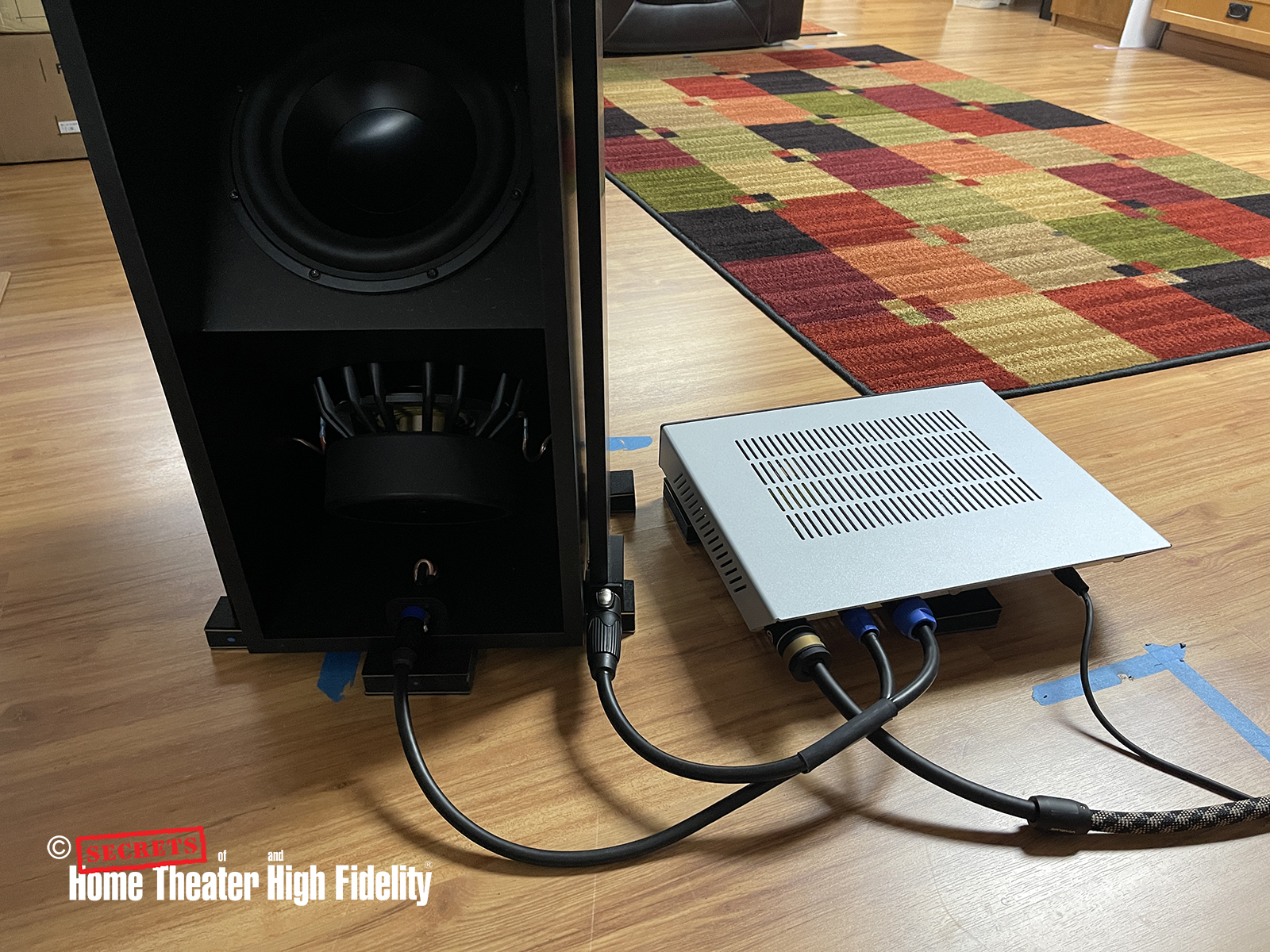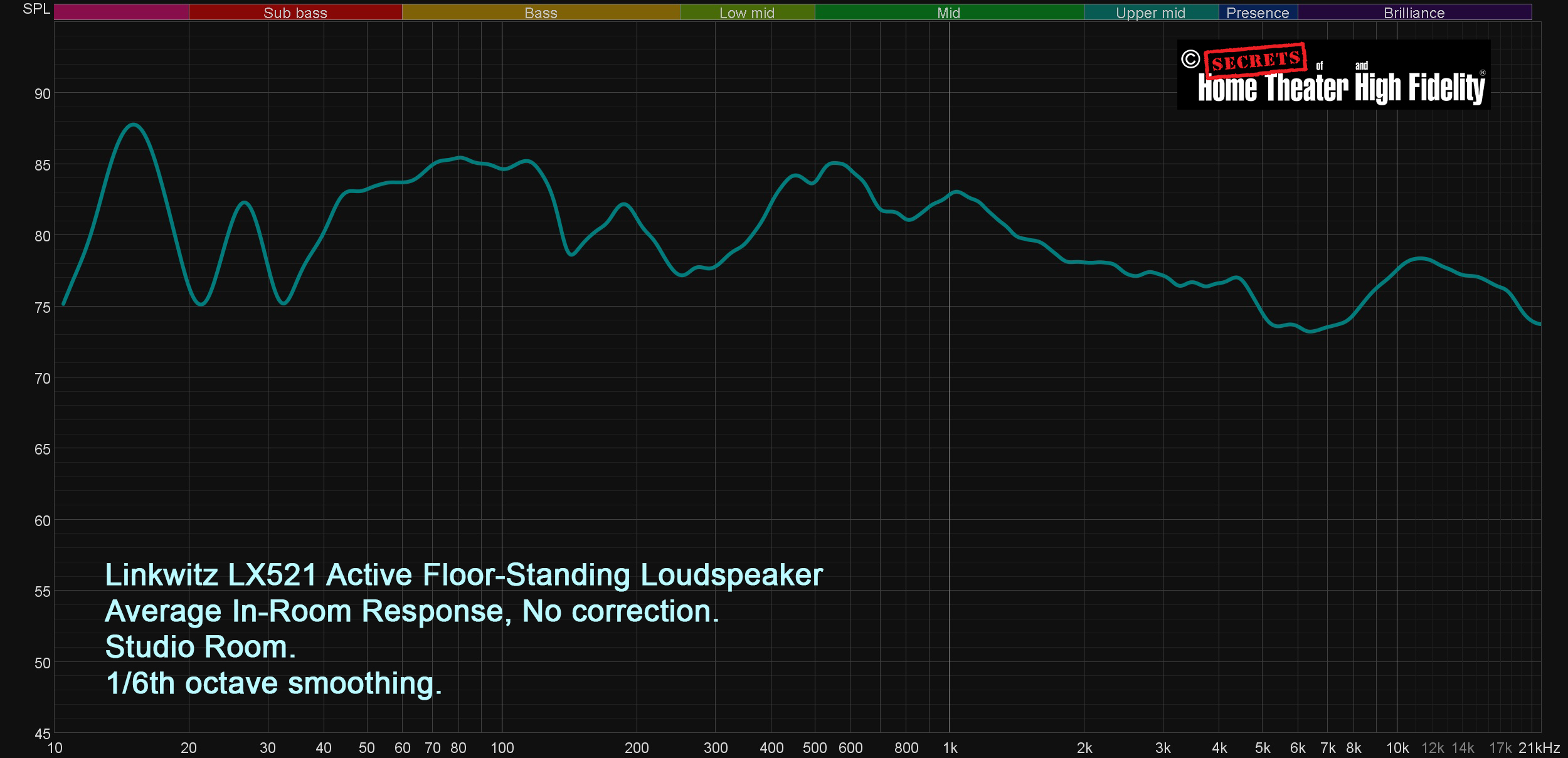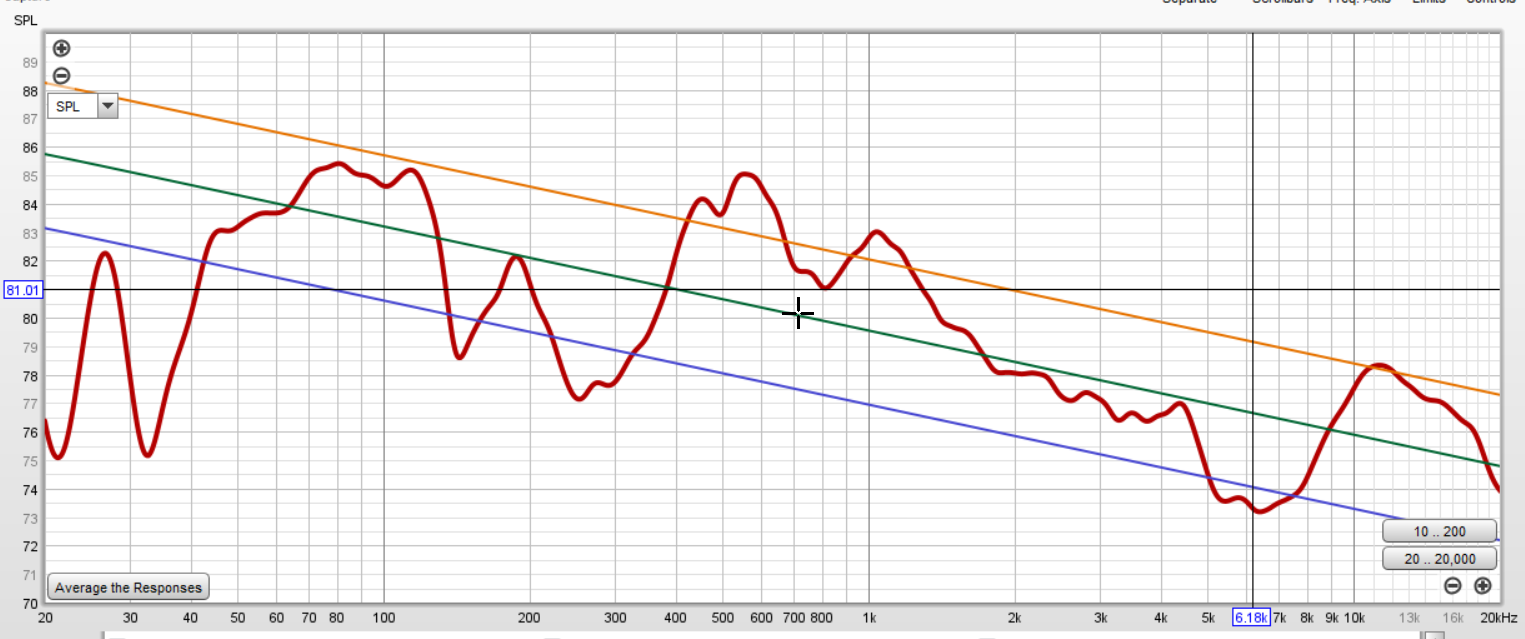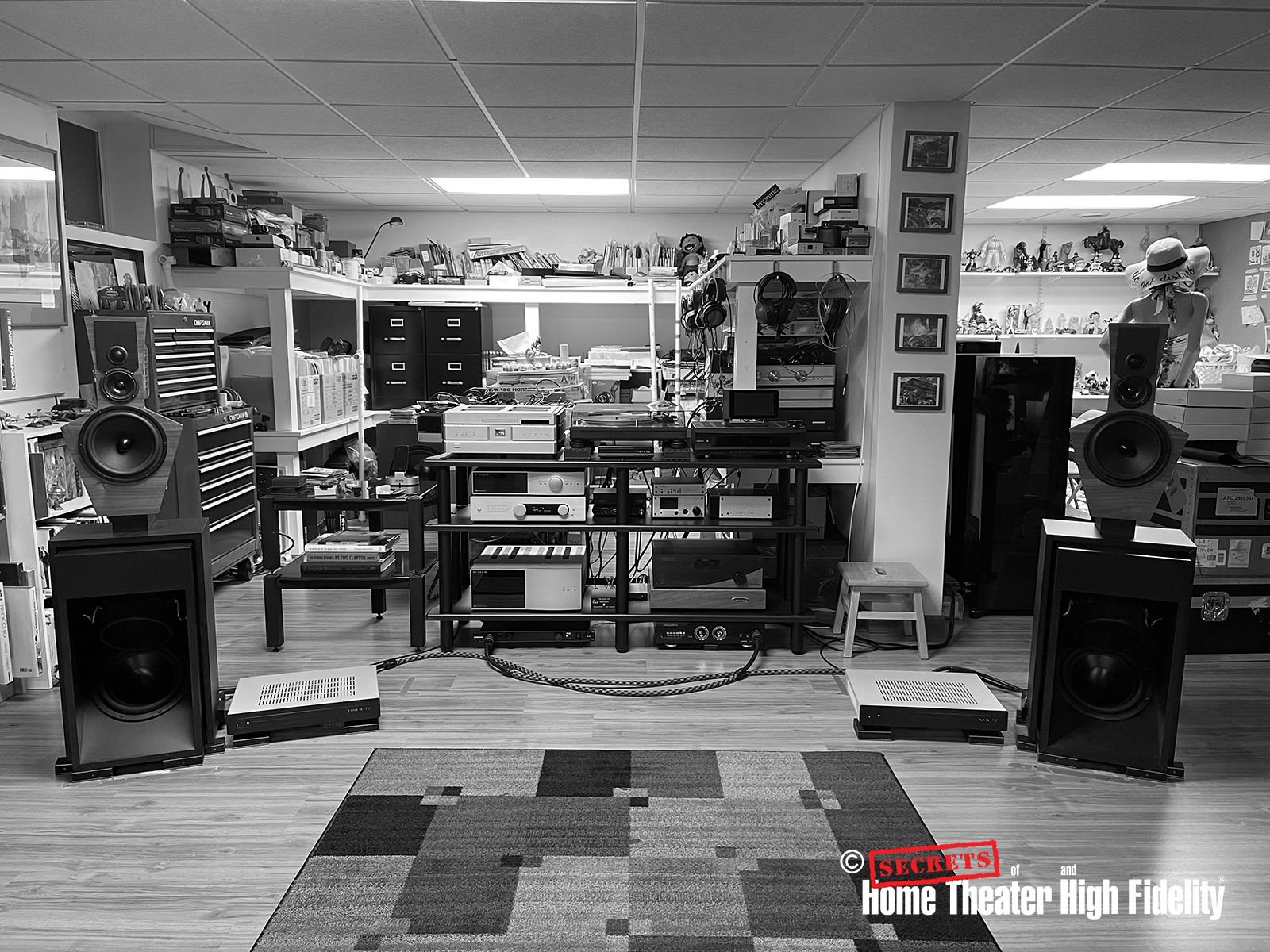While the Linkwitz LX521 isn’t a new design, the late Siegfried Linkwitz first premiered it in 2012. It has since been refined to its current state by both Linkwitz himself (before his passing in 2018) and by Frank Brenner and his team who now officially sell both complete speaker systems and building plans for the DIY crowd. The latest iteration of the open baffle LX521 sounds more natural and engaging than most traditional box speakers that I have come across. While they are most unconventional in appearance, the LX521 are most certainly a music lover’s loudspeaker. More for someone who is concerned about the final results and less about the individual components that get you there.
Linkwitz LX521.4MG Open Baffle Loudspeaker System Highlights
- They produce the most full and natural soundstage.
- Some of the tightest phantom center imaging with vocalists I’ve heard.
- Excellent bass extension, with natural mids, and refined highs.
- They need room to breathe. Can’t place them too close to walls.
- Designed as fully active speakers with an external ASP (Analog Signal Processing) box.
- The enduring work of an audio pioneer and legend.
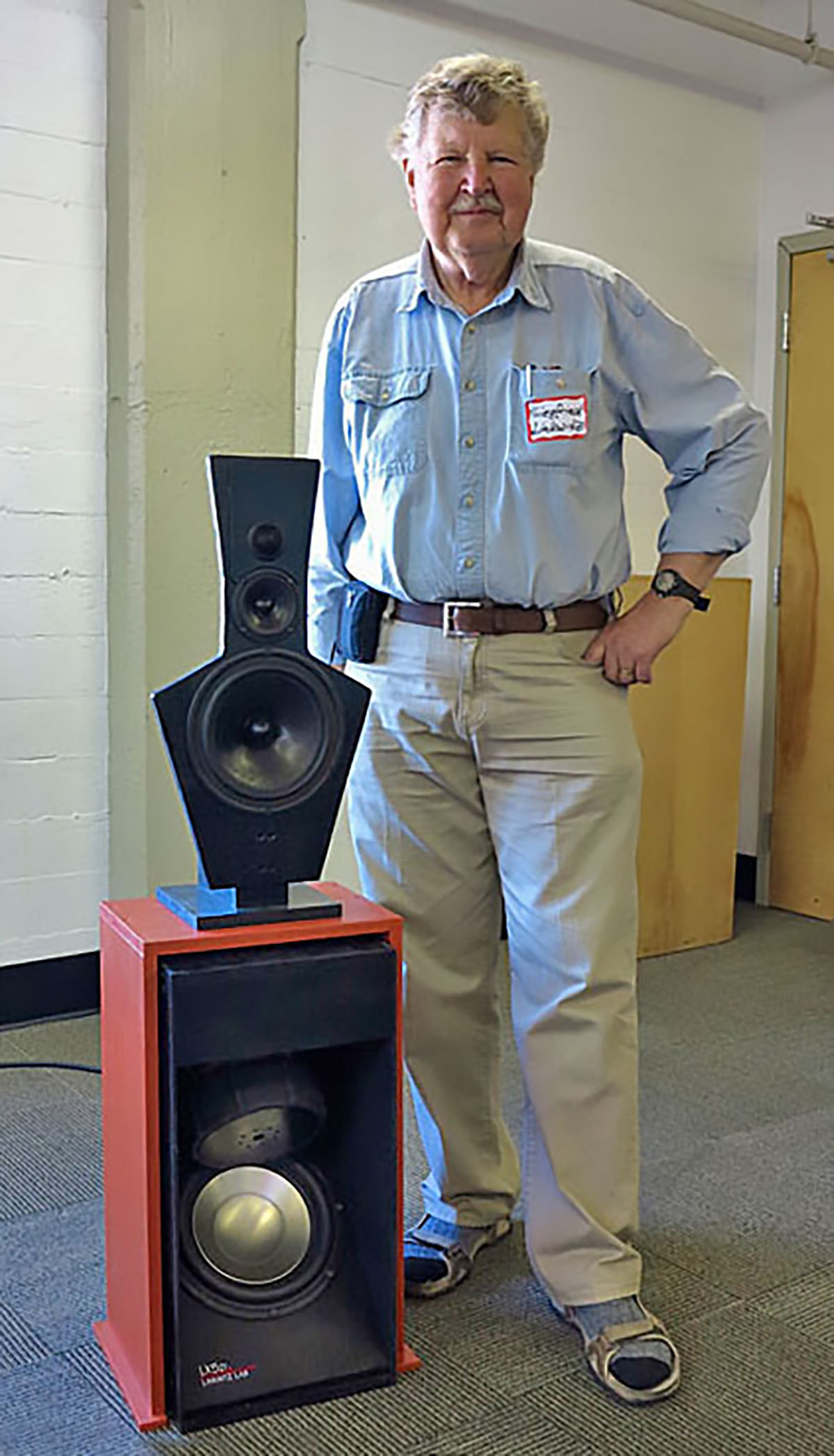 Siegfried Linkwitz with the LX521 prototype
Siegfried Linkwitz with the LX521 prototype
The Linkwitz LX521.4MG (as we have for review) is the top model in the series of speakers that the company sells. It is also the culmination of years of design research, conducted by the late Siegfried Linkwitz, on what constitutes the best speaker for most people’s listening rooms. Beginning with his Orion loudspeakers in 2002, and then with the Pluto speakers in 2005, Linkwitz looked to be convinced that open baffle, dipole, or omnidirectional loudspeaker designs held the promise of being the better reproducer of music if properly designed and executed. In Linkwitz’s mind, “Properly designed and executed” also meant that the speakers must be fully active, which he had been experimenting with since 1978.
Both the Pluto and Orion models were available for years, going through several revisions and updates as Linkwitz refined his research. Ultimately both models were superseded in recent years. The Pluto was replaced by the similar LXmini and the LX521 took over from the Orion as the reference model. One needs to only look at the Linkwitz Lab website to find years’ worth of research on Siegfried Linkwitz’s speaker designs along with his thoughts on all manner of related audio topics.
 Frank Brenner in middle with Siegfried Linkwitz
Frank Brenner in middle with Siegfried Linkwitz
In 2017 production of all Linkwitz loudspeakers was taken over by Frank Brenner on behalf of Siegfried Linkwitz. “Linkwitz Holographic Sound” as the company is now called is based in Germany and sells complete turnkey active speaker systems, and various degrees of DIY kits for those who wish to assemble and finish the speakers on their own. Having experienced a demo of the current version of the LX521.4MG at last year’s Capital Audio Fest, I spoke with Frank about the possibility of reviewing the speakers in my own home. He graciously agreed and a few months ago a single large crate arrived at my house with the speakers, PowerBoxes, and cabling that make up a full turnkey system. Let the games begin!
Design:
Active, 4-way open baffle/dipole loudspeakers with 10 channels of amplification.
High-Frequency Drivers:
Two SEAS 27TFF C/G 1-inch textile dome tweeters (one front, one back).
Upper Midrange Drivers:
One SEAS MU10RB-SL 4-inch Woven Poly Cone driver.
Lower Midrange Driver:
One SEAS U22REX/P-SL 8-inch woven polypropylene driver.
(Note: the review samples used the updated L22MG magnesium coned driver which is available as an upgrade. All turnkey LX521 systems now come with the L22MG low-distortion driver upgrade.)
Bass Drivers:
Two SEAS L26ROY4 10-inch aluminum cone drivers.
Frequency Response:
20Hz – 20kHz
Amplification and Signal Processing:
Two “PowerBoxes” each consisting of 5 channels of Hypex NCore amplification, 4-way cascaded active analog crossover, and the analog signal processing per speaker. 1 x 100 watts, 2 x 125 watts, and 2 x 250 watts. Includes 2-stage rumble filter via toggle switch.
Connections:
Balanced XLR from preamp. SpeakOn connections from amp to speakers.
Speaker Dimensions (H x W X D):
49.25” x 15” x 15”
Speaker Weight:
67 lbs. (each).
PowerBox Dimensions (H x W X D):
2.2” x 17.3” x 14.2”
PowerBox Weight:
5 lbs. (each).
Finishes:
American Walnut on Black HDF Core, American Walnut on Panzerholz Core, American Walnut High Gloss Finish, Aluminum-Panzerholz Sandwich Top, Individual Choice of Wood Type and Finishes.
Price:
Complete Turnkey systems- $25,000 – $28,000 depending on finishes. That includes airfreight to major US airports and local doorstep delivery.
Flat Pack Kit with plans, drivers (no amplification, no crossover)- $5,100
Flat Pack Kit with plans, drivers, PowerBoxes, and cables- $12,200
The Website:
Original Linkwitz Lab Site:
SECRETS Tags:
linkwitz, lx521, dipole open-baffle, active, loudspeakers
Secrets Sponsor
The Linkwitz LX521 is a fully open baffle dipole design, meaning that sound radiates, unobstructed, from both the front and rear of the speakers in a typical figure-of-eight pattern. Frank Brenner explained to me further,
“Just being “open baffle” does usually not provide the typical figure of eight dipole radiation pattern, to front and rear. Siegfried engineered the LX521 beyond “open baffle”: To get the desired dipole radiation pattern and therefore its beneficial effects on equal room illumination and soundstage.
These days, an increasing number of speakers are offered as “open baffle”, but only very few are typical dipoles.”
As dome tweeters are closed at their rear, the LX521 employs a second active tweeter (wired out of phase) firing rearwards to achieve the dipole effect. An open baffle dipole speaker, when properly implemented, can provide a heightened sense of spaciousness that some find more appealing or natural sounding than traditional box loudspeakers. Since the drivers are not enclosed as in a conventional loudspeaker cabinet, special attention must be paid to not placing the speakers too close to the back or side walls so that the rear reflected sound does not return to the listener too closely to the direct sound. The dipole woofer arrangement is also said to provide more uniform deep bass that can better integrate with a room versus standard sealed or ported bass configurations. Frank Brenner also added,
“Compared to conventional box speakers, the dipole woofers load the room with approximately 70% less energy. That translates into being 4.8dB less sensitive to room nodes and boomy bass.
Furthermore, the dipole bass bins may be toed in or out. That allows one to toe the woofers for optimal room response as different radiation directions in a room are illuminated differently.”
In Siegfried Linkwitz’s technical notes, he does make a case for the speakers needing a large room to perform at their best. His recommendations included:
1) The room reflections must be delayed for segregation from the direct sound streams (>6 ms) (speaker 3 feet from walls).
2) Reflections must be symmetrical or suppressed to preserve the left-to-right balance of the auditory scene (Symmetry of loudspeaker, listener, and room setup).
3) Diffusion behind the speakers.
4) Attenuation behind the listener which can be a long open space to the back wall as the listener sees it.
5) Toe-in to attenuate the first side reflection with the dipole speaker.
One thing you certainly can’t call the Linkwitz LX521 is “conventional.” Veneer and finish choices notwithstanding, it is very much a “form-follows-function” type of design that eschews any attempts at overt “beautification” in favor of what is needed for ultimate performance. I don’t know that I have had a more aesthetically polarizing speaker in my home before. Opinions ranged from “Wow, that’s different and cool looking!” to “A speaker that only an audio nerd and his mother could love!” I guess that means I technically fall into both categories! Seriously though, I think the design is unique and some of the finish options that Linkwitz offers (such as the full American Walnut and the Aluminum/Panzerholtz options) can look quite striking.
The two 10-inch woofers are housed in an open rectangular box and mounted on a “V-shaped” frame. This arrangement reduces any resonances above the woofer’s operating range via force cancellation. The woofer bin simply sits on the floor to take advantage of the resulting gain.
The tweeter/midrange driver array is arranged on a purposely designed, minimalist baffle. Minimalist is indeed the word as there is surprisingly little material holding the four drivers mounted here in place. The shape was calculated to provide the best possible dipolar radiation pattern with the chosen drivers. This baffle is mounted on a bridge assembly that neatly straddles the woofer bin but leaves a modest gap between the two so that no vibrations are passed through from the woofers to the tweeter and midrange baffle. The two sections are wired together via locking connectors on the wiring harnesses.
The drivers are all from speaker manufacturer SEAS of Norway. Each speaker has two SEAS 27TFF C/G 1- inch textile dome tweeters (one front-facing, one rear-facing), one SEAS MU10RB-SL 4-inch Woven Poly Cone upper-midrange driver, one SEAS L22MG 8-inch magnesium coned midrange driver, and two SEAS L26ROY4 10-inch aluminum cone bass drivers.
As this is a fully active design, each speaker comes with what Linkwitz Holographic Sound calls an external “PowerBox.” Each PowerBox contains the 4-way active cascaded crossover and all the analog signal processing on circuit boards populated with discreet components along with five channels of Hypex Class-D amplification per speaker. A single 100-watt amp is devoted to the front and rear tweeters, two 125-watt amps are reserved for the 4-inch upper midrange and 8-inch midrange drivers, and two 250-watt amps for the dual bass drivers in each speaker.
The PowerBoxes also have a front-mounted toggle switch that can engage a two-stage rumble filter for the bass frequencies. Especially useful when listening to vinyl. The PowerBoxes connect to each speaker via two SpeakOn connectors.
The speakers are available with an optional form-fitted fabric “sock” that is designed to fit precisely over the bass bin section, mimicking a grille.
Some equipment that was used with the Linkwitz during this review included:
– The Benchmark Media Systems HPA4 Preamp.
– The Trinnov Amethyst Preamp/Processor.
– The Topping D90SE DAC.
– The OPPO BDP-105D Universal Player.
– A Microsoft Surface 3 PRO as a ROON Core.
– A VPI Avenger Direct Turntable.
– A Technics SL1200 MK6 Turntable modified by KAB Electroacoustic.
– An Audio-Technica ART20 Phono Cartridge.
– An Audio-Technica VM540ML Phono Cartridge.
– Viablue interconnect cables.
– AV Room Service EVP Isolation devices.
The Linkwitz LX521 were positioned in my large studio listening room, spaced approximately 9 feet apart and well away from any rear wall. The speakers’ tweeter/midrange baffle has a widely adjustable horizontal range, so after some experimentation (and according to Siegfried Linkwitz’s notes), I settled for the baffle assembly to be toed in so that the tweeters were aimed almost directly at my head. This resulted in the best soundstage and imaging that I could get, using some test tracks and following Frank Brenner’s advice as to what to listen for.
One thing I did notice was the movement of the woofer cones playing music, even with only moderate levels of bass, caused the bass enclosure to move a little across my hardwood flooring. The addition of small rubber feet under the bass bin and the bridge frame that straddles it was not quite enough to stop the movement altogether. I ended up using a few strategically placed EVP isolators from AV Room Service under both the bass bin and bridge frame (ensuring that I kept adequate space between the two) and that did the trick. (For hard floors, the company recommends using very flat Sorbothane pucks or mats.
Due to the short connection cables between the PowerBoxes and the speakers themselves, the PowerBoxes were set on the floor next to each speaker. Each PowerBox was also suspended on EVP isolators to keep them free from any vibrations.
For me, loudspeakers are probably some of my favorite audio components to review. Next to your room, I find speakers have the most significant influence on what I ultimately hear from my listening seat. So, speakers to me are almost like different flavors of food. Each has a different look into the mind of their designers and their tastes in both technical performance and aesthetic design. Have you looked at what’s available out there these days when it comes to loudspeakers? It literally is a proverbial smorgasbord!
I’ve been fortunate enough to listen to, enjoy, and respect many a fine loudspeaker. Until now I don’t know that I’ve experienced a pair of loudspeakers that disappear and leave me with just the music as much as the Linkwitz LX521.4MG does. I realize that the whole “disappear and leave me with just the music” is a bit of an old saw in the well-worn land of audiophile descriptors. Kind of like “lifting a veil to reveal the true picture.” Uh-huh. In this hobby you have to wonder sometimes, exactly how many veils must you lift before you can “kiss the bride” so to speak!
As much as I like to poke fun at the literary gymnastics that some of us use to describe modern audio, there is a kernel of truth when it comes to the whole “disappearing act” that the LX521.4MG can perform. Conventional “box” loudspeakers in a stereo implementation, no matter how advanced or cleverly designed an enclosure they may have, always sound like point sources. They may have excellent dispersion qualities and a wide soundstage which is lovely, but they will always (to varying degrees) come across as sound generated from 2 distinct points in space.
Dipole flat-panel speakers exhibit this behavior far less. Their presentation is more difficult to localize and, as such, can feel more natural sounding. It’s one of the reasons such speakers are popular with the classical music crowd. A well-recorded orchestra can sound quite alive with a set of Maggie’s or Diptyques, for example. Where the bulk of these types of speakers suffer is in the bass department. Not being able to generate sufficient impactful bass in a manner that blends or matches up with the way the rest of the speaker sounds. This is from many needing to rely on subwoofers or a hybrid design that uses conventional dynamic drivers to help get those crucial bottom octaves.
The Linkwitz LX521.4MG with its fully dipole top section and bass bin, once positionally dialed-in, genuinely created the most natural-sounding musical illusion that I have experienced yet from a commercially available pair of loudspeakers. It was so uncanny that it took my brain a little while to process what was going on. As a complete turnkey system, there is minimal fussing around with component details to make sure everything behaves. Everything, beyond your source and volume control, is designed to work hand-in-glove with each other. Again, speaker positioning is the most critical aspect to get right. Once set, you are treated to an ease in the delivery of your favorite music, the whole bandwidth of it from top-to-bottom doesn’t feel projected at you. It is just there. Yes, the illusion is most apparent when you are sitting in the traditional sweet spot and just listening. In those cases, I enjoyed a sonic picture that had not just an expansive amount of width but was also accompanied by an inordinate sense of depth to fully complete the image. There was plenty of detail in the image that placed vocalists, instruments, and performers exactly where they should be without sounding irritating in the upper frequencies.
But what was in some ways more surprising was just how much I enjoyed these speakers when I was not firmly fixed in the center seat. I can’t tell you how many times I was at my computer or my drawing desk, each at opposite ends of the room, with the LX521.4MG playing in the background and the quality of the reproduction snapped me out of whatever I was doing and made me turn around. These are speakers that sound really, really good wherever you are in the room.
Here are some examples of what I’m talking about.

Jacob Dinesen, “Let The Hard Times Come”, DALI Recordings, 2021, CD.
A live-in-the-studio recording. Jacob Dinesen is a well-regarded Danish singer and guitarist, and this edition of Jacob’s album was specially recorded by the fine folks at DALI for a slightly different flavor from the original studio release. The LX521.4MG do their vocal imaging magic on Jacob’s voice, creating a palpably real-sounding recreation of Jacob and his guitar floating between the speakers. On the track “Telephone” it isn’t just that Jacob’s voice is so precisely placed between the LX52.4MGs but that there is an added depth that makes that phantom image so solid and satisfying. It’s said to be something that dipole or omnidirectional speakers are supposed to excel at but in practice, they do so with varying degrees of success. There is such a delightful and appealing balance happening with the Linkwitz LX521.4MG as they play back this music. The details of Jacob’s guitar on the track “Found It” as the strings strum and his hand slides down the neck are extraordinary. Jacob turns to playing a grand piano on “Beautiful Sight” to which he sounds equally gifted. The size of the piano sounds natural with a good sense of the recording space relayed by the LX521.4MG. Again, the sense of spaciousness created by these speakers feels wholly natural, even when listening from well out of the sweet spot. The ring and decay of the piano notes sound exceptional with a lovely sense of weight to them. Combined with his rich and resonant voice it makes for a very satisfying listening experience, putting out a deep, spacious, and detailed sound that outclasses many larger and more imposing loudspeakers.

Senri Oe, “Class of ‘88”, PND Records, 2023, CD.
A modern easygoing jazz trio recording with piano, drums, and bass, there is also the odd solo piano track mixed in for good measure. The track “Bamboo Bamboo” has a great groove going through it as the Linkwitz LX521.4MG reaches down low and gets that thick pumping bass line flooding through the room. The drum kit is solidly placed in the center but the crisp cymbal playing extends out past either speaker and sounds just super clean and delightful. The piano itself imaged really large. Probably unnaturally so but that has more to do with the recording. Still, it sounded fantastic to hear it reproduced that big and the ring and decay of the notes sounded very clear and appealing. The solo piano on “My Glory Days” sounds more natural in recorded size but the LX521.4MG still gives it that extra sense of spaciousness and depth in playback that completes that impression of reality when listening.
Senri Oe has a great sensitivity in his playing and the emotion of what he’s doing just translates so well through these loudspeakers. I can even make out the sound of the pedals as he presses and releases on them. You’ve no doubt heard (ad-nauseum) how difficult an instrument piano is to reproduce through loudspeakers. I don’t think I have heard another speaker that has quite the overwhelming command at recreating this instrument as faithfully as the Linkwitz LX521.4MG. When set up properly, they are truly exceptional in this regard. Nothing else I’ve come across touches them when it comes to piano. “Lauro De Freitas” is a lovely little Bossa Nova-inspired number that just makes me want to toss my laptop away and just melt in my chair as the beautiful sounds wash over me. Mission accomplished Mr. Linkwitz, mission accomplished!
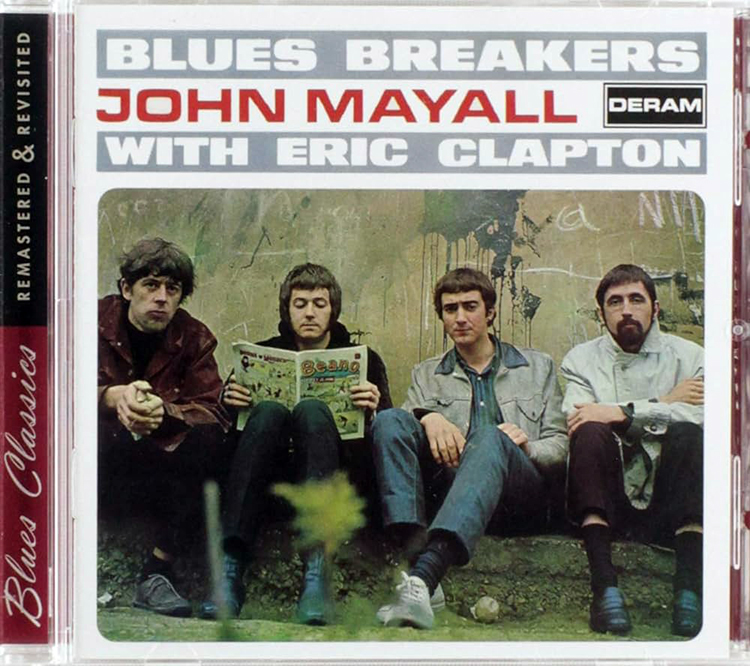
John Mayall and the Bluesbreakers with Eric Clapton, “Bluesbreakers”, Deram, 1966, FLAC 16/44.1.
So, we’ve heard how the LX521.4MG sounds with modern, well-recorded music thus far, but what happens when we have something older, more stripped down, and primitive to listen to? Listening to John Mayall and the Bluesbreakers’ first album on these speakers is so much fun, especially the stereo mixes of these songs. Some purists may feel differently, but to me, in mono, these guys are mixed all on top of each other in the center and just sound squished. In stereo, the LX521.4MG just takes these great old British Blues tracks and seemingly immerses me in them. “Have You Heard” is a classic track that just sounds phenomenal with the opening saxophone front and center and John Mayall’s voice singing tangibly right in front of me, like I was in some seedy little blues club. Eric Clapton is simply off in the right channel, wailing away on his Les Paul like he’s some feral and freakishly possessed blues banshee. In my mind, this is the track that started the whole “Clapton is God” stuff back in the day, and for good reason. He was young, driven, and single-mindedly viscous on his guitar. It comes through on these speakers like nothing else. Special mention to Hughie Flint’s drum kit and cymbals in the left channel sounding nicely shimmery and John McVie on bass coming through solidly and clearly discernible which wasn’t always the case when listening to this track in mono, occasionally getting lost a little in Mayall’s keyboards. This is great stuff, right here!

Rachmaninoff: “The piano Concertos & Paganini Rhapsody”. Yuja Wang and the Los Angeles Philharmonic/Gustavo Dudamel, DG, 2023, 24/96 FLAC via Qobuz.
More lush and exquisite piano playing but now backed by a full orchestra. Here the LX521.4MG just fills the room with a huge soundstage of strings, woodwinds, and horns with the piano nicely placed right in the center of the image. Tonally the piano sounds excellent, particularly with some weight to those lower register notes that I could really feel through the LX521.4MG. Yet Ms. Yang’s delicate runs through the upper registers don’t receive any short shrift from these speakers either. Airy and detailed are the notes with that nice sense of reverb and decay. The LX521.4MG translates the sense of space of the recording venue very well.
When I listen to full-fat orchestral music, I want to hear a big, spacious presentation. I want the sense of being transported into that concert hall where I can hear and feel the impact of all the instrument sections. Not everyone is after that as plenty of classical recordings don’t sound big and not all speakers will image that way, even with a favorable recording. The Linkwitz LX521.4MG, with this recording at least, made me feel like I was in the hall, seventh row, center listening to this exceptional performance.
Now if there was a way the LX521.4MG could help me listen to Rachmaninoff’s No. 2 and not immediately make me think of Eric Carmen’s “All By Myself,” I would be eternally grateful!

The Holly Cole Trio, “It Happened One Night”, Blue Note Records, 1995, CD.
An old standard that I use for speaker evaluation, because it is an outstanding live recording, and it is outstanding music. Cole’s live rendition of Tom Waits’ “Train Song” is tremendous. The thunderous and lumbering bassline is relayed with appropriate depth and solidity by the LX521.4MG. It’s amusingly contrasted with the detail of the maracas that shake and pan across the speakers. Holly Cole’s voice is imaged nicely and naturally in the center. In fact, that is the linchpin of this album, the natural rendition of the live recording space. No excessive artificial reverb is noticeable, just a clean live recording at the event space.
“Losing My Mind” is another wonderful track that brings in the weight of a full drum kit, piano, and a somewhat ethereal electric guitar. The Linkwitz LX521.4MG creates this deep cohesive soundscape with all of these instruments playing together yet each being clearly discernible in space and with Holly Cole’s confident vocals anchoring it all in the center. These speakers really do well at recreating a live environment from a good live recording. Another Tom Waits classic, “Tango ‘Til They’re Sore” is not to be missed here in the Holly Cole Trio’s live retelling.
Secrets Sponsor
Bench tests were performed with a Cross Spectrum Labs calibrated UMIK-2 microphone connected to my computer workstation using Room EQ Wizard acoustic measurement software. Unlike measurements taken outdoors or in an anechoic chamber that measures a speaker in isolation, in-room measurements give a sense of how a speaker behaves in the actual environment in which it’s used. Both types of measurements are valuable (make no mistake, a properly designed speaker in an anechoic environment will hold up much better in an average listening space), I just find in-room measurements interesting as they help shed light on what I am hearing and why.
CL: This in-room measurement is an 18-point spatial average. A 9-point measurement was made for the right speaker and then repeated for the left speaker. Averaging both speakers is an approach others have been using and publishing. Using data from both speakers reduces the modal response of the room by averaging the differences in the response of the two speakers from room asymmetries. The technique cannot eliminate them however and so the response below 300Hz remains room-dominated.
DAR: It is important to remember the in-room response is a mix of direct sound from the speaker, the early reflections (one bounce), and the later reflections from multiple bounces and diffusion.
The LX521.4MG is intentionally designed to delay the room reflections from the direct sound stream by 6ms so the ears can separate the direct sound from the reflections. The above single in-room curve cannot account for this. While the in-room curve does a good job reflecting the sound of a speaker at the listening chair with direct radiating speakers, with flat listening windows, and known early path reflections as defined by CEA 2034 based on blind listening tests, the same cannot be said of the LX521.4MG.
DAR: We have also included the plot of the 18 individual curves to understand better the variation that occurs as the microphone moves.
The speaker best matches a target curve of -1.1dB octave, which is a little steeper than a typical forward- firing speaker. The slope would imply a more forgiving speaker in the direct radiator world, but that likely does not apply here.
DAR: The target curves are displaced by +/- 2.5dB, which covers most of the response range above 300Hz.
The dip from 5kHz -7kHz is at the midrange – tweeter crossover. The rise is when the tweeter is active. I do not think we are capturing the real radiation of the speakers with the dipole tweeter at these high frequencies.
What is happening in the frequency range between 400Hz and 1.5kHz is hard to explain. The earlier scatter plot shows the trajectory of any microphone placement varies from the average. Again, I think it is the wrong technique to measure this type of speaker and would rely more on the data in the figure below, courtesy of the linkwitzlab website.
 Courtesy of linkwitzlab.com
Courtesy of linkwitzlab.com
DAR: Carlo’s room is well documented to have some energy loss below 400Hz. The lower midrange is operational to 120Hz. From the above image, we see the speaker holds a dipole response until the woofer crossover. Almost all the dip is less than 3dB from the target, which is about what can be expected from such a complex, real-world deployment of the speaker.
How this changes the response compared to that of a direct radiator in Carlo’s room is challenging to analyze. Every direct radiator he has tested has had drivers in the 120Hz – 400Hz range at different heights. The placement of the speakers in his room is also not consistent; it is driven instead by optimizing the placement for the best subjective sound, including toe-in.
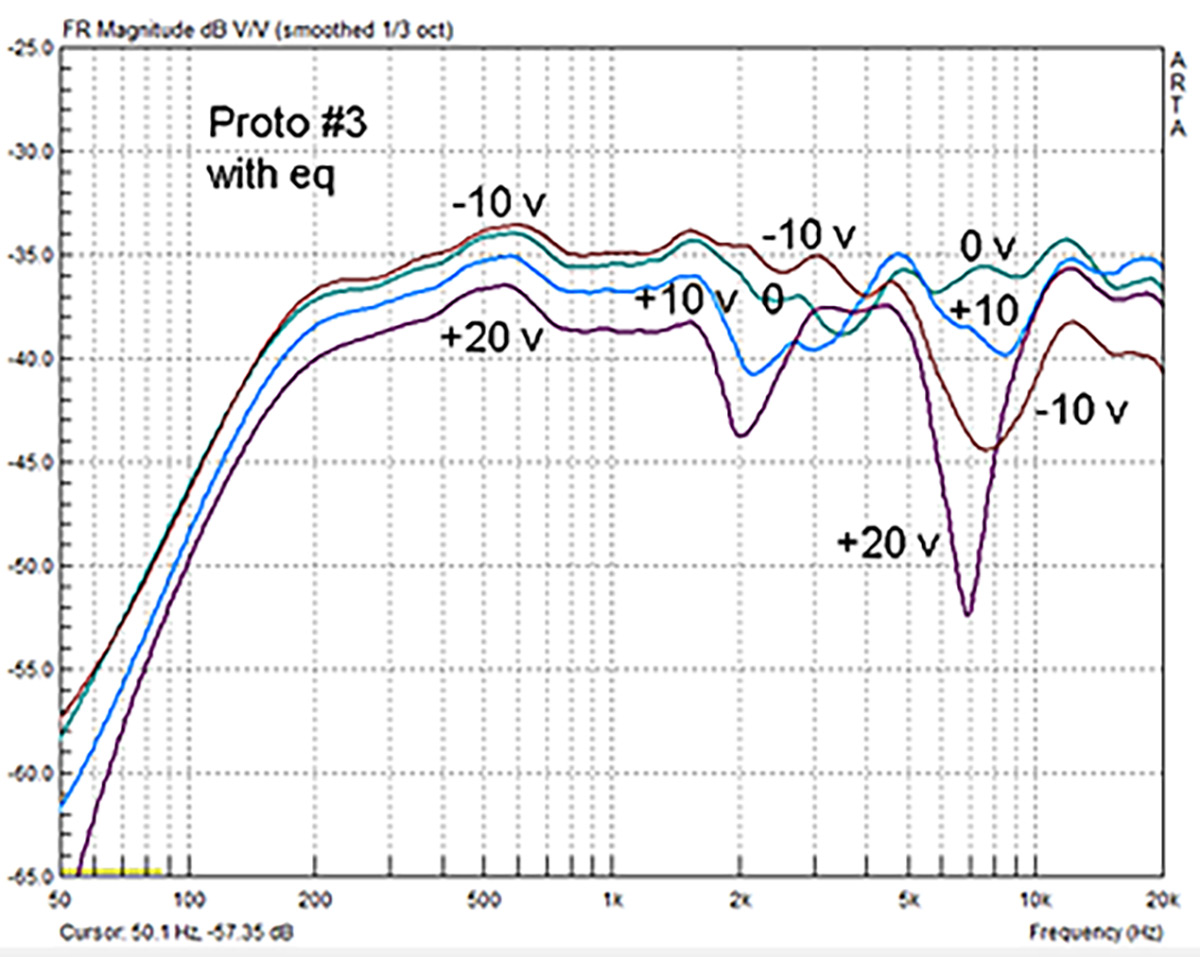 Courtesy of linkwitzlab.com
Courtesy of linkwitzlab.com
DAR: And yet, once the woofers come in, the modes magically melt away, showing that the V-frame baffle’s open woofers are improving things over a more conventional woofer.
CL: There are a couple of additional room response dips at both 32 and 22 Hz in my in-room average. Normally in this room, the bass steeply rolls off below 25 Hz. I’ve usually only been able to overcome this bass limitation by using a pair of very large, dual-driver subwoofers. Yet the LX521.4MG shows that it has the potential for significant bass output with a significant peak at 15 Hz. It should be noted that this measurement was taken with the speaker’s subsonic rumble filter engaged in the medium position (toggle switch down on both PowerBoxes) as I was getting significant woofer driver excursion with the filter off. In hindsight, I may have wanted to play with the toe-in of the woofer bins more to see if I could have ameliorated at least one of those dips.
DAR: As a dipole woofer, the response rolls off very early, relative to the completed design’s targeted – 6dB roll-off. A significant amount of positive EQ is applied to the woofer when its natural roll-off begins. The issues the EQ creates concerning excess cone excursion are combined with the woofers seeing no back pressure loading, as in a sealed box. The cones are thus free to produce significant displacement even before the EQ is added.
Siegfried’s analysis points to the woofer design in the LX521.4MG as having significant advantages, and we saw this in the mode control below 120Hz, but the issues Carlo points out show it also has some disadvantages.
The Linkwitz LX521.4MG is a loudspeaker system that must be experienced by every music lover, even if you never intend to own one. I highly recommend it, if just to hear what is possible.
- Intelligently designed, active loudspeakers.
- Natural, convincing sound beyond reproach.
- Available as a DIY project or a full turnkey system.
- A completely full-range system.
- As unpretentious as an audiophile speaker could be.
- Better isolation of the bass bin from moving on a hard floor.
There are a lot of speakers out there that I could happily live with. A smaller number of those I could honestly say are speakers that I really like and admire. There are precious few still that, for whatever reasons, I would actually claim to desire. The Linkwitz LX521.4MG are speakers that I would gladly add to the “desire” column. I won’t begin to claim that I completely understand all that has gone into the development and fine-tuning of these speakers to achieve the results that they do. There is the designer’s website which is a veritable treasure trove of design and development information should you wish to delve into those aspects further. What I am left with is a loudspeaker system whose every aspect has been thoughtfully researched and designed to further the recreation of music. Notice I didn’t say reproduction. The LX 521.4MG genuinely sounds like no other loudspeaker out there and they come the closest that I have heard in my home to recreating a convincing musical event.
One can argue aesthetic design details if they so choose, but I find nothing objectionable about the look of the LX521.4MG. They look purposeful. They are also not overly complex to set up and are neither overly large nor heavy. Yet these active icons produce music in its fullest range and in the most immersive and natural way possible from two speakers. And while I may have used a dash of room correction to smooth out the bass in a challenging room, that doesn’t mean everyone is going to need to.
As it was when it first came out, the Linkwitz LX521.4MG is a most forward-thinking loudspeaker system. A successful example of what can be done when a designer is not limited to conventional wisdom. As such, I don’t consider them outrageously priced for the results they provide. They are the enduring work of the late Sigfried Linkwitz and his desire to recreate music in the most faithful and natural way possible. A most fitting legacy, I’d say.


